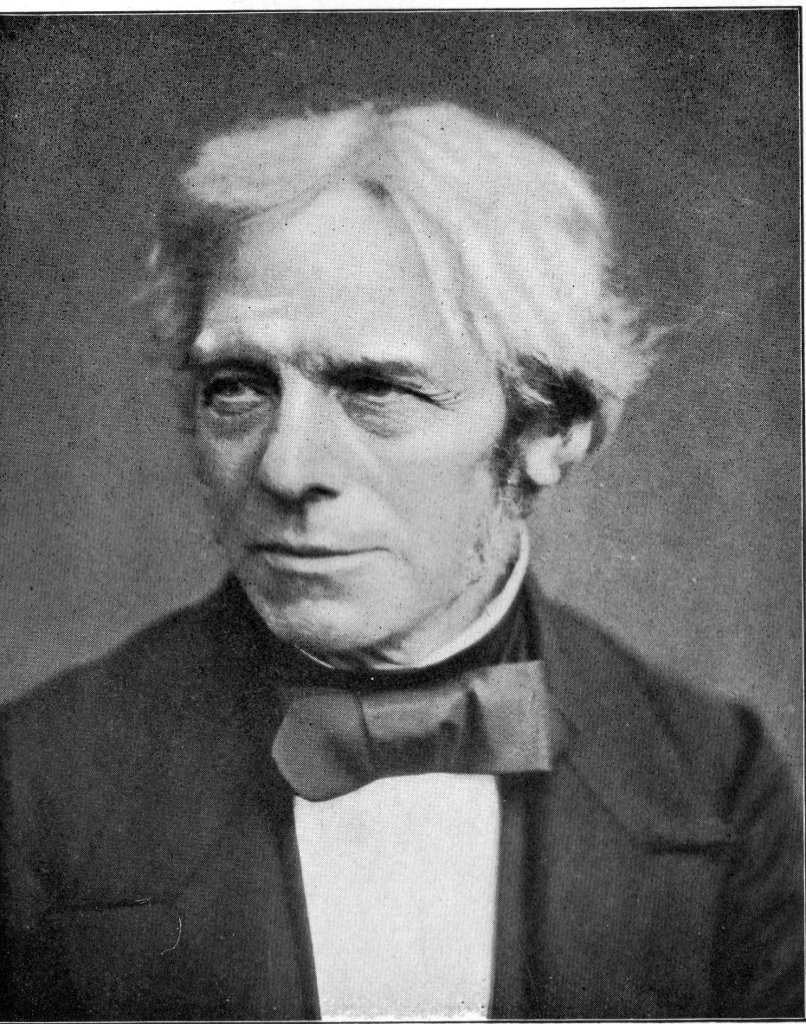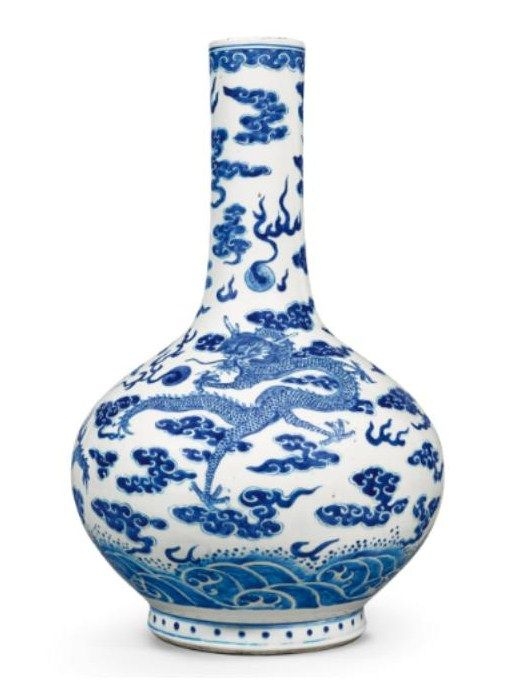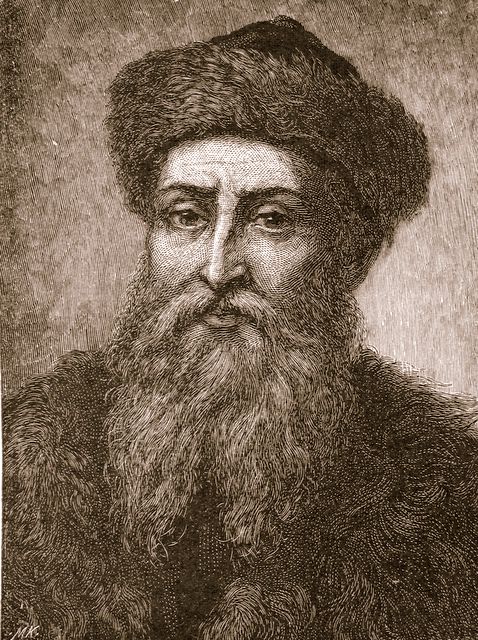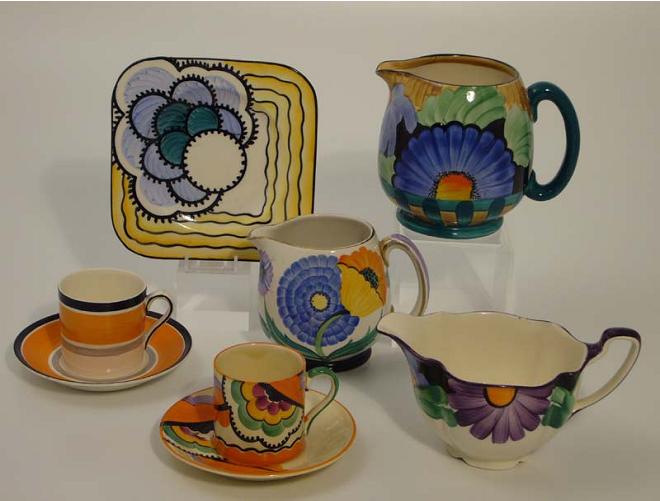Pictured: Susie Cooper being interviewed by BBC Radio Stoke’s presenter Pat Lawrence at the opening of the Gray’s Pottery exhibition in Hanley, Stoke-on-Trent, February 1982.
Much has been written about this extraordinary designer, an icon throughout twentieth-century ceramic design. ‘Susie Cooper – A Pioneer of Modern Design’, 2002, Andrew Casey and Ann Eatwell, is an excellent reference book on her career.
Miss Cooper joined Gray’s Pottery as a paintress in June 1922 straight from the Burslem School of Art. Gordon Forsyth had encouraged her to do this: it was a means of gaining the necessary experience to enable her to take-up a place at London’s Royal College of Art to study dress design. Forsyth approached AE Gray and asked him to appoint her temporarily in order to fulfil the RCA’s conditions of being in full-time employment. She remained with Gray’s Pottery until October 1929 and left to start her own business, Susie Cooper Pottery Ltd, thereby launching a business that lasted over fifty years. Her formidable success was in pottery, not dresses! That success was also translated to Gray’s Pottery in the 1920s and helped to really put the Glebe Works on the map, at home and abroad – even with the Royal Family.
DESIGNS
Gray’s Pottery pattern numbers were sequential. When number 9999 had been reached, around 1931, the numbers restarted with an ‘A’ prefix. Other prefixes were used after 1950. Research suggests that the numbers in use during Miss Cooper’s time at Gray’s start at 2800 and end around 8449. It is therefore relatively easy to estimate how many patterns were produced in this period:
- 2800 – 2999: 200
- 3000 series: no patterns have been found yet with 3000 series numbers
- 4000 – 4749: 750 (no 4000 series number above 4749 yet found)
- 5000 – 5599: 600 (no 5000 series number above 5599 yet found)
- 6000 series: 20 (only a handful yet found)
- 7000 – 7999: 1000
- 8000 – 8449: 450
- TOTAL: 3020
3020 patterns in something like 7½ years approximates to eight new patterns per week. This would be a tall order for a single designer, especially when the development of a pattern onto many shapes – egg-cups, plates, tea-pots, bowls, casseroles etc – is taken into account. It is therefore extremely unlikely that all the patterns within the 2800-8449 range were created by one person, even a person of the talent and energy of Susie Cooper!

The coffee pot on the extreme right, with banded pattern 7670, is a shape which Susie Cooper regarded as being hers. It was made by Kirklands for Gray’s Pottery and was in use until well after Susie Cooper had left the company. The other shapes in the picture may well have resulted from its general design theme in subsequent years:
Soup jug – made by Kirklands for Grays – mark R2.
Teapot – sourced from Johnson Brothers – pattern A2467, mark N2.
Creamer – made by Kirklands for Grays – pattern A4169 Woodgrave, mark R2.
Coffee pot – sourced from Johnson Brothers – pattern A961, mark N2.
Creamer – maker unknown – pattern 9104, part-mark N2.
Teapot – possibly made by Kirklands for Grays – pattern A2288, mark N2.
Gordon Forsyth certainly designed for Gray’s Pottery while Miss Cooper was there (see notes on Forsyth in this section) as did Jack Bond and it is also likely that Sam Talbot progressively produced designs after joining the firm in 1925.
The liner backstamp, mark D, helps, and hinders, any assessment of Miss Cooper’s patterns for Gray’s. It was almost certainly introduced in 1927, some five years after she had joined the company and it probably carried no reference to her name initially (see mark D7). However, within a year the words DESIGNED BY SUSIE COOPER had been added, initially separately and later as an integral part of the backstamp (see mark D1). This stamp was then in use until late 1929, coinciding with her departure from Gray’s Pottery to set-up her own business. D1 was then replaced by D5 or D6, probably a practical solution for exhausting a stock of lithographs.

Examples of patterns in production during the time when Susie Cooper was Art Director at Gray’s Pottery:
Bowl, 7682, floral-fuchsias, 166 dia, mark D7 plus ‘Handpainted’.
Plate, 8076, banded-black stitch, 171 dia, mark D1.
Vase, 5156 Persian, lustre-copper+MOP, 208 high, mark E1 black. (A silver lustre version, 8554, exists).
Plate, 8327 Pastoral, print & enamel, 133 sq, mark N1. (Note Pastorel is pattern 8335).
Paris jug, 8071 Cubist, abstract, 134 high, mark D1 plus ‘Designed specially for Lewis’s Ltd by Susie Cooper’.
Teapot, 8375 Aquamer, banded, 168 dia, mark N2.
Teacup & saucer, 8069, floral, cup 80 dia, both marked D1.
Butter dish, 8312 Harmony, banded, 130×157, mark N6.
Sweet cup, 7517, floral, 106 dia, mark H1.
Teacup & saucer, 8408 (Thistle), floral, cup 95 dia, both marked N2.
Teacup & saucer, 7671 Golden Catkin, cup 75 dia, mark D3 (no mark on cup).
Bowl, 8286 (Layebands), banded, 95 dia, mark Heals1.
CONCLUSION
Any pattern within the range 2800 and 8449, without a letter prefix, could have been designed by Susie Cooper but may have been designed by one of Gray’s other designers, or by a senior paintress working for Miss Cooper when she was appointed Art Director. The presence of the words DESIGNED BY SUSIE COOPER are a strong indication that the pattern was by Miss Cooper, but not a guarantee.
WHITE WARE
One of the reasons why Susie Cooper left Gray’s Pottery was the strictures placed on her as a designer because she had to use shapes bought-in from various manufacturers, so-called ‘white ware’ because it was undecorated. This prevented her from designing the pot in its entirety. However, Miss Cooper was always confident that one of Gray’s coffee pot shapes, manufactured by Kirklands in Etruria, Stoke-on-Trent, was one of her early shape designs, and it seems that its form was mirrored in other shapes such as teapots, soup jugs and creamers. Some were supplied by Kirklands (the clue here is the presence of mark R2 and no understamp) and also by Gray’s major white ware supplier, Johnson Brothers of Hanley.
Credit:











